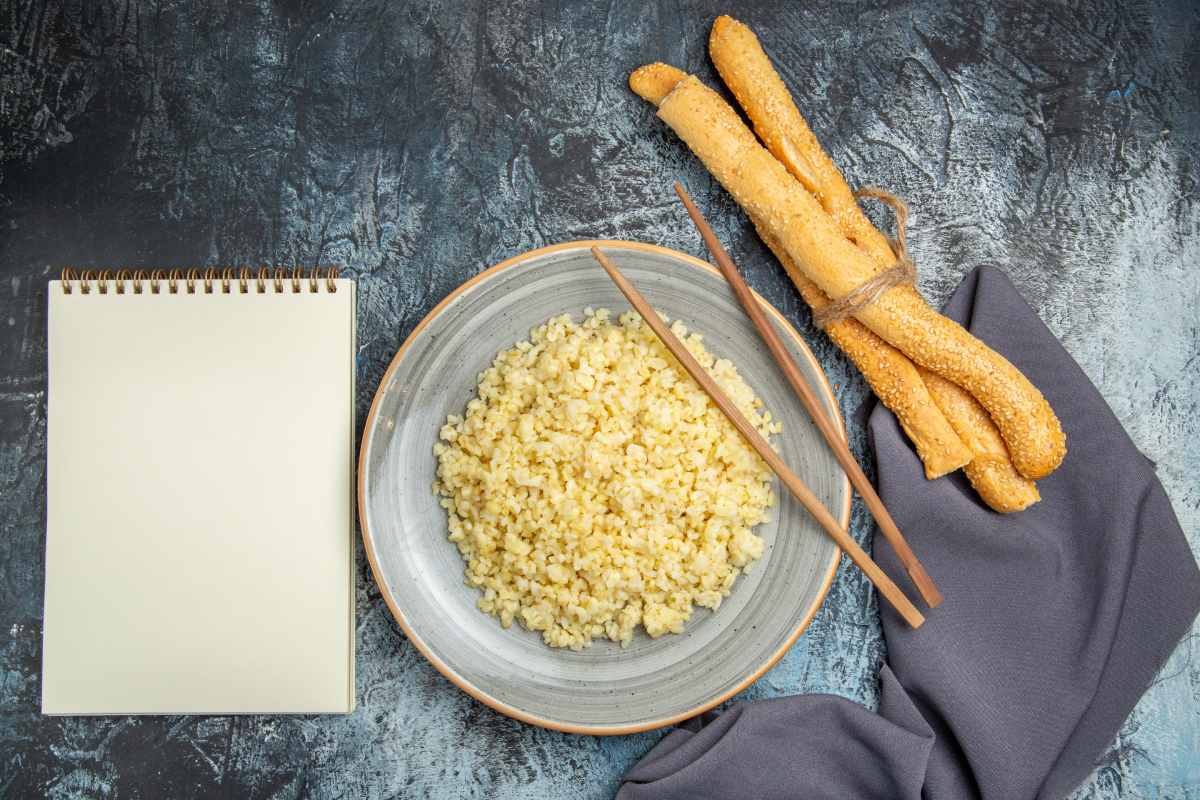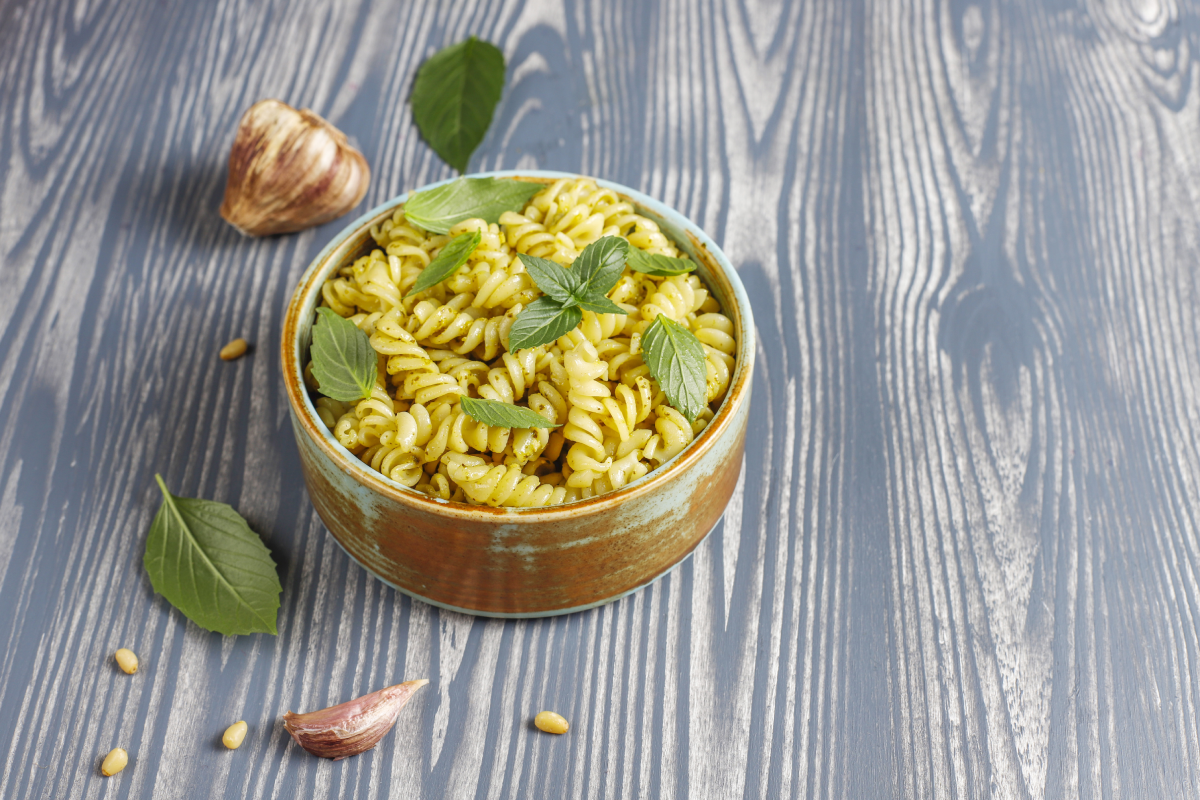Introduction to Pasta Substitution
Embarking on a culinary journey often leads to delightful discoveries, especially when it comes to pasta. One such exploration is learning how to substitute orzo for ditalini, a swap that can transform your dishes in unexpected ways. This guide offers insights and tips on making this pasta substitution seamlessly, ensuring your meals remain as delicious as ever.
Understanding Pasta Shapes and Sizes
Pasta, in its myriad forms, serves as the backbone of countless dishes worldwide. The magic of pasta lies not just in its flavor but in its shape and texture, which can significantly influence a dish’s final outcome. When contemplating a swap, such as substituting orzo for ditalini, it’s crucial to recognize how these elements play together on the culinary stage.
Orzo, with its rice-like appearance, and ditalini, known for its “little thimbles” shape, both offer unique contributions to dishes. Yet, the question looms: can one step into the shoes of the other without missing a beat? Absolutely, yet with a dash of understanding and a sprinkle of creativity.
The Role of Texture and Shape in Pasta Dishes
The texture of pasta dictates its interaction with sauces and ingredients; smoother shapes glide amongst lighter sauces, while ridged varieties become havens for heartier ones. Orzo, often found in salads and pilafs, brings a tender yet slightly chewy texture. Ditalini, with its compact shape, excels in soups and stews where it absorbs flavors like a culinary sponge.
How Substitutions Can Alter Dish Dynamics
Swapping orzo for ditalini isn’t just a matter of taste; it’s about adjusting to the dance of textures and flavors. A substitution may introduce a new rhythm to a familiar melody, creating a variation that’s both refreshing and harmonious. For instance, in a brothy soup, orzo might spread out, mingling with vegetables and broth, whereas ditalini would offer a more focused burst of pasta in each spoonful.
The beauty of pasta substitution lies in experimentation. By understanding the roles of shape and texture, you’re equipped to make swaps that respect the dish’s integrity while infusing it with your personal touch. So, let’s dive deeper into the specific characters of our protagonists, orzo and ditalini, and unveil the potential within your pantry.
Orzo and Ditalini Pasta – A Comparative Overview
Characteristics and Best Uses of Orzo Pasta:
With its resemblance to rice grains, orzo stands out as a versatile contender in the pasta realm, earning recognition in both Italian and international cuisines. Its smooth texture and seamless integration into various dishes have made it a kitchen essential for those who enjoy culinary experimentation.
Origin and Culinary Uses
Emerging from the Mediterranean’s rich culinary tapestry, orzo is often associated with Greek, Italian, and even Middle Eastern dishes. Its adaptability shines in cold salads, where it soaks up dressings and harmonizes with vegetables, cheeses, and herbs, offering a delightful play of textures and flavors.
Ideal Dishes for Orzo
- Salads: Orzo pairs beautifully with a rainbow of ingredients, making it a summer salad champion.
- Pilafs: A fantastic rice alternative, it provides a satisfying base for herbaceous and aromatic pilafs.
- Soups: While not as traditional as ditalini in soups, orzo can add a comforting element to lighter broths.
Ditalini Pasta – Characteristics and Best Uses
In the opposite corner, we have ditalini, the tiny powerhouse beloved in soups and stews. Its name, translating to “little thimbles,” perfectly describes its shape and hints at its ability to add delightful texture to every bite.
Origin and Culinary Uses
Rooted in Italian cuisine, ditalini is most commonly spotted in the classic Pasta e Fagioli, where it partners with beans and vegetables in a hearty broth. Its structure allows it to maintain integrity, absorbing flavors while offering a satisfying bite.
Ideal Dishes for Ditalini
- Soups and Stews: The quintessential choice for adding body and texture to broths.
- Pasta Salads: When looking for a pasta that’s both bite-sized and flavorful, ditalini fits the bill.
- Casseroles: Its small size and ability to retain shape make ditalini a good candidate for baked dishes.
Exploring the nuances of orzo and ditalini reveals that while they occupy different niches, their potential for interchangeability exists. The key lies in understanding the essence of the dish you’re aiming to create and how the pasta’s texture and shape will interact with other ingredients. Whether opting for orzo’s elegance in a salad or ditalini’s heartiness in a soup, both pastas hold the promise of elevating your culinary creations.
Celebratory Recipe: Orzo and Ditalini Fusion Dish
To culminate our exploration of substituting orzo for ditalini pasta, let’s step into the kitchen and craft a dish that beautifully marries the characteristics of both pastas. This fusion recipe not only serves as a testament to our culinary journey but also showcases the versatility and creativity that pasta substitutions can inspire.
Orzo-Ditalini Minestrone Medley

A hearty, comforting soup that blends the textures and flavors of both orzo and ditalini, creating a symphony of taste in every spoonful.
Ingredients:
- 1/2 cup orzo pasta
- 1/2 cup ditalini pasta
- 2 tablespoons olive oil
- 1 medium onion, diced
- 2 cloves garlic, minced
- 1 carrot, diced
- 1 stalk celery, diced
- 1 zucchini, diced
- 1 can (14.5 oz) diced tomatoes, undrained
- 4 cups vegetable broth
- 1 can (15 oz) cannellini beans, rinsed and drained
- 1 teaspoon dried oregano
- 1 teaspoon dried basil
- Salt and pepper to taste
- 2 cups fresh spinach leaves
- Grated Parmesan cheese, for serving
Instructions:
- In a large pot, heat the olive oil over medium heat. Add the onion and garlic, sautéing until soft and fragrant, about 2 minutes.
- Stir in the carrot and celery, cooking for an additional 5 minutes until slightly softened.
- Add the zucchini and cook for another 2 minutes before incorporating the diced tomatoes, vegetable broth, cannellini beans, oregano, and basil. Season with salt and pepper.
- Bring the soup to a boil, then reduce the heat to simmer. Add the orzo and ditalini pastas, stirring to combine.
- Let the soup simmer for about 10-12 minutes, or until the pastas are cooked al dente.
- A few minutes before serving, fold in the fresh spinach leaves, allowing them to wilt but retain their vibrant color.
- Serve the minestrone hot, garnished with a sprinkle of grated Parmesan cheese.
This Orzo-Ditalini Minestrone Medley is more than just a recipe; it’s a celebration of the adaptability and joy that come from experimenting with pasta. Each ingredient plays a role in harmonizing the distinct textures and flavors of orzo and ditalini, resulting in a dish that’s both comforting and exciting.
As you savor this fusion creation, reflect on the culinary journey that brought us here, from understanding the nuances of pasta substitution to embracing the possibilities it presents. Here’s to many more adventures in the kitchen, where creativity knows no bounds.
Substituting Orzo for Ditalini Pasta

Factors to Consider When Substituting Pastas
Substituting one pasta shape for another, like orzo for ditalini, isn’t just a whimsical kitchen experiment—it’s a thoughtful decision influenced by several factors. Understanding these can help ensure that your culinary swap doesn’t just work; it sings.
Texture and Cooking Times
The texture of pasta can dramatically influence a dish’s overall mouthfeel. Orzo, slightly chewier and more spread out in a dish, contrasts with ditalini’s more concise, al dente bite. Aligning cooking times is crucial, as a mismatch could lead to an underwhelming or overcooked outcome. Always aim for that perfect pasta ‘bite’ to keep the dish’s soul intact.
Flavor Absorption and Dish Composition
Pastas interact with sauces and ingredients in unique ways. Ditalini, with its compact shape, excels at trapping flavors inside its hollow center, offering a burst of taste with each bite. Orzo, on the other hand, tends to blend more smoothly with its surroundings, creating a harmonious flavor profile. Consider the role of pasta in your dish: Is it a flavor carrier or a textural component? The answer will guide your substitution strategy.
By understanding these factors and exploring through recipes, you’ll find that substituting orzo for ditalini isn’t just possible—it can be a delightful culinary adventure. With a bit of knowledge and creativity, your dishes will not only succeed but may even discover new dimensions of flavor and texture.
Recipes and Adaptations
Let’s dive into the practical side of substitution with some adaptable recipes that welcome orzo and ditalini interchangeably.
Soup Recipes
A classic minestrone soup, rich with vegetables and a clear broth, traditionally leans on smaller pastas like ditalini. Substituting orzo can add a slightly different texture, encouraging the ingredients to meld together more cohesively, without losing the heartiness that defines the dish.
Salad Recipes
Consider a Mediterranean orzo salad, bursting with olives, tomatoes, cucumber, and feta cheese. Replacing orzo with ditalini can introduce a playful texture, making each forkful a blend of crisp vegetables and pasta with a more pronounced bite.
Baked and Casserole Dishes
In baked dishes, where pasta is enveloped in sauce and cheese, both orzo and ditalini can shine. A cheesy ditalini bake can easily embrace orzo as a substitute, offering a creamier consistency that’s equally comforting.
By understanding these factors and exploring through recipes, you’ll find that substituting orzo for ditalini isn’t just possible—it can be a delightful culinary adventure. With a bit of knowledge and creativity, your dishes will not only succeed but may even discover new dimensions of flavor and texture.
FAQs
Common Questions and Expert Answers
In the world of pasta, questions abound, especially when it comes to substitutions. Here, we’ll address some of the most common inquiries, shedding light on how to swap orzo for ditalini with confidence.
Can I Substitute Orzo for Ditalini in Soup?
Absolutely! When substituting orzo for ditalini in soups, remember that orzo may slightly alter the soup’s texture, offering a more dispersed pasta presence. To maintain balance, consider slightly reducing the amount of orzo to prevent it from dominating the dish.
Adjusting Liquid Ratios for Pasta Substitutions
Since orzo and ditalini absorb liquids differently, slight adjustments may be necessary. Typically, orzo absorbs more broth than ditalini, so when making the switch, it’s wise to have a little extra broth on hand. This ensures your soup or sauce remains perfectly balanced, neither too thick nor too runny.
How to Prevent Overcooking When Substituting Pastas
The key to perfect pasta is vigilant cooking. Start checking orzo a couple of minutes before the package’s suggested cooking time, especially when substituting it for ditalini in recipes where it continues to cook in a sauce or soup. Al dente is the goal—tender yet firm to the bite—to prevent a mushy outcome.
Through these FAQs, we’ve navigated the nuances of pasta substitution, aiming to empower you with the knowledge to make swaps seamlessly. Whether it’s adjusting liquid ratios or ensuring the perfect cook on your orzo, these insights pave the way for successful culinary creativity.
Exploring the synergy between orzo and ditalini unveils a world of possibilities, inviting you to experiment with textures, flavors, and dishes. Remember, the best pasta dish is one that brings joy to the table, regardless of the shape you choose.
Conclusion and Final Thoughts
As we wrap up our comprehensive guide on substituting orzo for ditalini pasta, it’s clear that the world of pasta offers a delightful playground for culinary exploration and creativity. Through understanding the unique characteristics of these pastas, adjusting for texture and cooking times, and navigating the FAQs of substitution, we’ve equipped ourselves with the knowledge to make informed choices in our cooking endeavors.
The journey through the various aspects of pasta substitution highlights not just the versatility of orzo and ditalini, but also the broader lesson of being open to experimentation in the kitchen. Substituting one pasta for another can lead to discoveries of new favorite dishes and techniques, enriching our culinary repertoire.
Embracing Flexibility and Creativity
This guide serves as a reminder that cooking is as much about flexibility and adaptation as it is about following recipes to the letter. Whether you’re looking to switch up a beloved family recipe or simply make do with what’s in your pantry, the ability to substitute one ingredient for another opens up a world of possibilities. It’s an invitation to engage with your food, understand its components, and personalize your dishes in a way that resonates with your tastes and preferences.
The Joy of Cooking with Pasta
Pasta, in its myriad shapes and sizes, brings a unique joy and comfort to the table. Whether it’s the simplicity of a weeknight orzo salad or the warmth of a ditalini-laden soup on a cold day, these dishes serve as a testament to the humble ingredient’s power to bring people together. By exploring substitutions like orzo for ditalini, we not only broaden our culinary horizons but also pay homage to the tradition and innovation that define cooking.
Looking Forward
As you continue on your culinary journey, let the lessons learned from orzo and ditalini inspire you to experiment further, to ask “what if?” and to find joy in the unexpected outcomes. The world of pasta substitution is just the beginning—countless other ingredients await your creative touch and willingness to explore.
Thank you for joining us on this exploration of orzo and ditalini. May your kitchen adventures be filled with curiosity, discovery, and deliciousness.
As we conclude this guide, remember that the art of cooking is not just in the creation of a dish but in the experiences and memories we build around the table.

